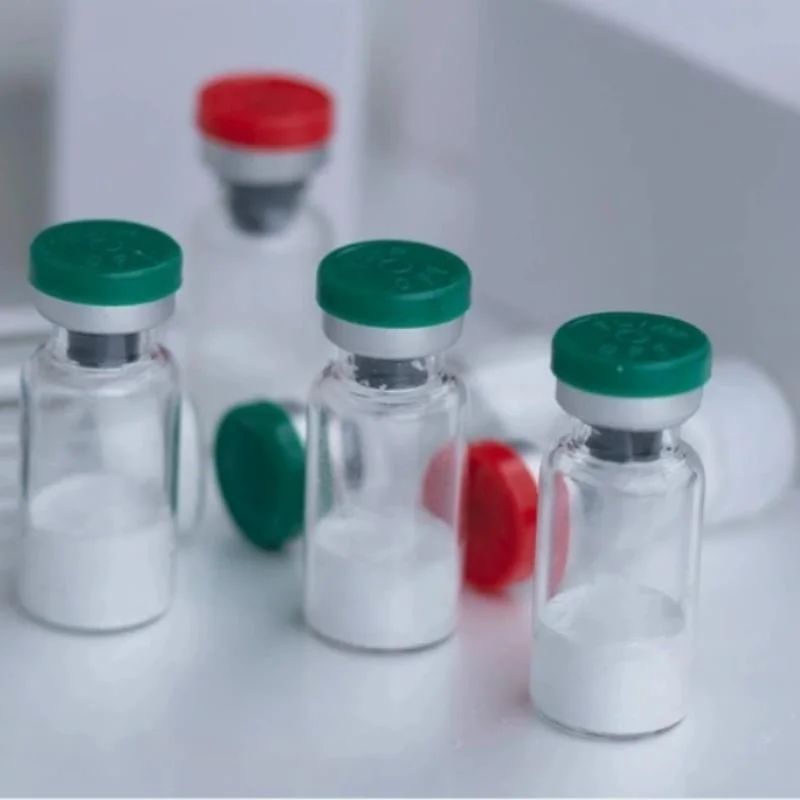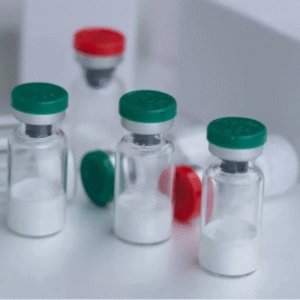Tesamorelin Overview
Tesamorelin is a synthetic peptide analog of growth hormone-releasing hormone (GHRH), developed to stimulate the body’s natural production of human growth hormone (HGH). Initially approved by the FDA for treating HIV-associated lipodystrophy, Tesamorelin has also gained attention for its potential applications in fat loss, metabolic regulation, and body composition improvement—though off-label uses should be approached with caution and under medical supervision
1. Composition of the Peptide
-
Tesamorelin is a synthetic peptide composed of the first 44 amino acids of human growth hormone-releasing hormone (GHRH).
-
It is conjugated to a trans-3-hexenoic acid group to improve its stability and resistance to enzymatic degradation, allowing for better bioavailability and a longer half-life compared to native GHRH.
2. Benefits
Tesamorelin’s benefits are primarily linked to its ability to stimulate endogenous HGH release. Documented and potential benefits include:
-
Reduction in visceral adipose tissue (VAT):
-
Clinically proven to reduce deep abdominal fat in HIV-positive patients with lipodystrophy.
-
VAT reduction observed without significant loss of subcutaneous fat.
-
-
Improved lipid profile:
-
May reduce triglyceride levels and improve cholesterol ratios.
-
-
Enhanced insulin-like growth factor 1 (IGF-1) levels:
-
Promotes anabolic processes, tissue repair, and cellular regeneration.
-
-
Potential cognitive and neuroprotective benefits:
-
Early studies suggest Tesamorelin may positively influence cognitive function in older adults by modulating IGF-1.
-
-
Body composition improvements (off-label observations):
-
Increased lean muscle mass.
-
Improved metabolic rate and fat oxidation.
-
May support better sleep and recovery via improved HGH secretion.
-
3. Sample Cycle or Dosage Protocol
📌 Important: The following protocol is based on clinical dosing guidelines and research settings. It is not a substitute for professional medical advice.
-
Clinical Dose:
-
2 mg subcutaneously (SQ) once daily, usually administered in the abdominal area.
-
Administered at bedtime to mimic natural circadian HGH release and optimize pituitary stimulation.
-
-
Cycle Duration:
-
Clinical studies often span 12–26 weeks.
-
Visible reductions in visceral fat may begin within 2–3 months.
-


Reviews
There are no reviews yet.